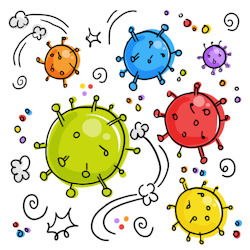A new study published in Science suggests that SARS-CoV-2 has mutated in a way that has enabled it to spread quickly around the world, but the spike mutation may also make the virus more susceptible to a vaccine, according to a news release from the University of North Carolina at Chapel Hill.
The new strain of coronavirus, called D614G, emerged in Europe and has become the most common in the world. Research at the University of North Carolina and the University of Wisconsin-Madison shows the D614G strain replicates faster and is more transmissible than the virus, originating in China, that spread in the beginning of the pandemic.
While the D614G strain spreads faster, in animal studies it was not associated with more severe disease, and the strain is slightly more sensitive to neutralization by antibody drugs.
“The D614G virus outcompetes and outgrows the ancestral strain by about 10-fold and replicates extremely efficiently in primary nasal epithelial cells, which are a potentially important site for person-to-person transmission,” said Ralph Baric, PhD, Professor of Epidemiology at the UNC-Chapel Hill Gillings School of Global Public Health and Professor of Microbiology and Immunology at the UNC School of Medicine.
Researchers believe the D614G strain of coronavirus dominates because it increases the spike protein’s ability to open cells for the virus to enter. These crown-like spikes give the coronavirus its name.
The D614G mutation causes a flap on the tip of one spike to pop open, allowing the virus to infect cells more efficiently but also creating a pathway to the virus’ vulnerable core.
With one flap open, it is easier for antibodies—like the ones in the vaccines currently being tested—to infiltrate and disable the virus, the researchers said.
“The original spike protein had a ‘D’ at this position, and it was replaced by a ‘G,’” Yoshihiro Kawaoka, PhD, a virologist at the University of Wisconsin, said. “Several papers had already described that this mutation makes the protein more functional and more efficient at getting into cells.”
That earlier work, however, relied on a pseudo-typed virus that included the receptor-binding protein but was not authentic. Using reverse genetics, Baric’s team replicated a matched pair of mutant SARS-CoV-2 viruses that encoded D or G at position 614 and compared basic property analysis using cell lines, primary human respiratory cells, and mouse and hamster cells.

